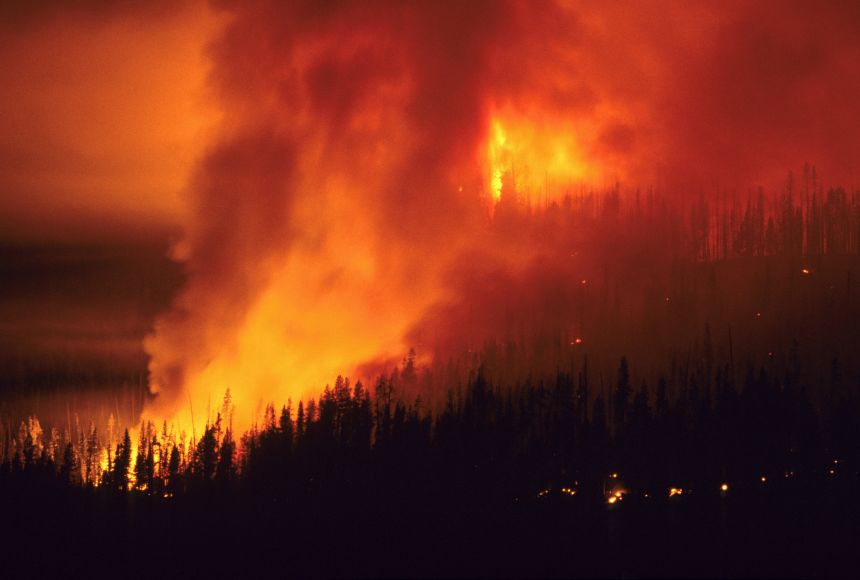Climate change caused by the emission of greenhouse gases from human activities affects global temperature and precipitation. Records from the Intergovernmental Panel on Climate Change indicate that the global average temperature has increased by at least 0.4 degrees Celsius (0.72 degrees Fahrenheit) since the 1970s, and that by 2100, it could increase to around 4 degrees Celsius (7.2 degrees Fahrenheit) above preindustrial temperatures. While the global effects of climate change may seem too small to be noticed by people living around the world, we have already experienced the effects of climate change through severe weather events, including forest fires, hurricanes, droughts, heat waves, floods, and storms. Computer modelling of real data has shown that the frequency and intensity of these events are influenced by climate change.
There is a distinction that needs to be made when it comes to the relationship between climate change and extreme environmental events: Climate change has not been proven to directly cause individual extreme environmental events, but it has been shown to make these events more destructive, and likely happen more frequently,than they normally would be.
This drastic change is due to the increase in greenhouse gas emissions—primarily through the burning of fossil fuels for transportation, heat, and electricity—in the past 150 years. Greenhouse gases, such as carbon dioxide, methane, and nitrous oxide, trap heat within Earth’s atmosphere, making the planet warmer. A warmer atmosphere affects the water cycle because warmer air can hold more water vapor. In fact, the air’s capacity to hold water vapor increases by 7 percent with an increase in temperature of 1 degree Celsius (1.8 degrees Fahrenheit). This, along with warmer ocean temperatures, leads to heavier precipitation. Heavy precipitation can cause problems like flooding and landslides—where large amounts of soil or rock slide down a slope.
An increase in intense precipitation comes with an increase in intense dry periods as well. Essentially, climate change causes wet places to become wetter and dry places to become drier by altering large-scale atmospheric circulation patterns. Warmer temperatures on land lead to reduced snowpack, earlier snowmelt, and evaporation of water from freshwater bodies. Extreme heat can lead to more frequent, severe, and prolonged heat waves and droughts and can make forest fires worse. On top of that, wildfires are harder to put out when air temperature is high and soil moisture is low.
The number of heat waves, heavy rain events, and major hurricanes has increased in the United States. Hurricane Katrina of 2005 and Hurricane Sandy of 2012 are two of the most costly hurricanes in the history of the United States. The number of hurricanes that have occurred over recent years has not been linked to climate change, but their intensity has. The wind speed of tropical storms is increased by warmer sea-surface temperatures; by the end of the century, scientists predict maximum wind speed will increase by 2–11 percent. Coastal cities that are vulnerable to hurricanes will also be impacted by the sea level rise of around 0.3–1.2 meters (0.98–3.94 feet) in the next century, which will worsen coastal storms and flooding.
Without preparing for climate change–induced environmental hazards, an increasing number of people worldwide will lose their homes and be forced into poverty. An average of around 22.5 million people have been displaced per year by climate or weather-related events since 2008.
One way to prepare for extreme environmental events is by using current and past data and records to create computer models that show the frequency and intensity of these events. These models can also be used to predict when and where future events will occur and how destructive they will be. With this information, we can prepare for extreme weather events by warning people living in high-risk areas and sending disaster relief. The impact of climate change can also be observed in models by simulating the effects of different concentrations of greenhouse gases on variables, such as wind, rainfall, temperature, and air pressure.
Past models used to prove that there is a relationship between climate change and extreme environmental events were not always reliable. This was due to a lack of data as well as flaws in climate models at the time. However, climate models have become more reliable, and a new field of science has developed to determine how climate change directly impacts extreme weather events: extreme event attribution. Since 2004, scientists have published more than 170 studies on the role of human-induced climate change on 190 extreme weather events. Research has found that climate change has increased the risk of wildfires in the western United States, extreme rainfall in China, and drought in South Africa. Continuous research and improvement in the field of extreme event attribution may help us figure out more precisely how climate change impacts extreme weather events–and how we might change this course.
